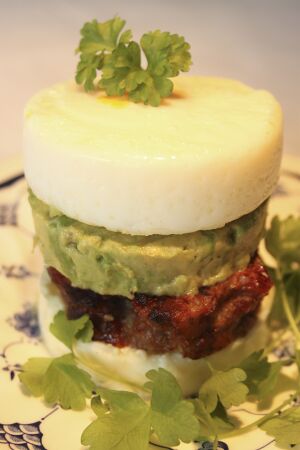

What is the Paleo diet?
The paleolithic diet; Paleo diet, is a diet based on the foods ancient ancestors might likely have eaten, such as meat, nuts, and berries, and excludes food to which they had not yet become familiar, like dairy. The Paleolithic era was a period lasting around 2.5 million years that ended about 10,000 years ago with the advent of farming. It was characterized by the use of flint, stone, and bone tools, hunting, fishing, and the gathering of plant foods.
A Paleo diet is Gluten free but a Gluten free diet is not Paleo friendly.
The diet is based on the premise that Paleolithic humans evolved nutritional needs specific to the foods available at that time, and that the nutritional needs of modern humans remain best adapted to the diet of their Paleolithic ancestors. Proponents argue that this is true because modern human metabolism has been unable to adapt fast enough to handle many of the foods that have become available since the advent of agriculture. Thus, they believe modern humans are maladapted to eating foods such as grain, legumes, and dairy products, and in particular the high-calorie processed foods that are a staple of most modern diets. Proponents claim that modern humans' inability to properly metabolise these comparatively new types of food has led to modern-day problems such as obesity, heart disease, and diabetes. They claim that followers of the Paleolithic diet may enjoy a longer, healthier, more active life.
Critics of the Paleolithic diet have raised a number of objections, including that: paleolithic humans did eat grains and legumes; humans are much more nutritionally flexible than Paleolithic diet advocates claim; Paleolithic humans were not genetically adapted to specific local diets; the Paleolithic period was extremely long, and saw a wide variety of natural items that humans used for sustenance; and/or, that very little is even known for certain about exactly what Paleolithic humans ate.
History and terminology
The idea of a paleolithic diet can be traced to the work in the 1970s by gastroenterologist Walter Voegtlin. The idea was later developed by [Stanley Boyd Eaton] and [Melvin Konner], and popularized by [Loren Cordain] in his 2002 book; The Paleo Diet. The terms caveman diet and 'stone-age diet are also used, as is Paleo Diet, trademarked by https://en.wikipedia.org/wiki/Loren_Cordain.
Dietary outline
Loren Cordain (see above) has said the diet requires:
- More protein and meat: Meat, seafood, and other animal products represent the staple foods of modern-day Paleo diets, since advocates claim protein constitutes 19–35% of the calories in hunter-gatherer diets. The Centers for Disease Control and Prevention, the national public health institute of the United States, recommends that 10–35% of calories come from protein. Advocates recommend, relative to modern diets, that the Paleolithic diet have moderate to higher fat intake dominated by monounsaturated and polyunsaturated fats and omega-3 fats, but avoiding trans fats, and omega-6 fats. It should be noted that the increased uptake of meat and proteins should consist of meats from grass-fed animals. Livestock raised on a grass diet are able to incorporate omega-3 fatty acids from grass into their tissue, as opposed to a grain fed diet high in omega-6 rich corn. This includes grass fed meats that are “finished with grains.”
- Fewer carbohydrates: Non-starchy vegetables. The diet recommends the consumption of non-starchy fresh fruits and vegetables to provide 35–45% daily calories and be the main source of carbohydrates. According to the United States Department of Agriculture, the acceptable macronutrient distribution range for carbohydrates is 45 to 65 percent of total calories. A typical modern diet gets a lot of carbohydrates from dairy products and grains, but these are excluded in the Paleolithic diet.
- High fiber: High fiber intake not from grains, but from non-starchy vegetables and fruits.
Excluded foods in a Paleo diet
Food groups that advocates claim were rarely or never consumed by humans before the Neolithic agricultural revolution are excluded from the diet. These include:
- dairy products
- grains, for example wheat, rye, canary seed, and barley, which make it a gluten-free diet
- legumes, for example beans and peanuts
- processed oils
- refined sugar
- salt
Neither alcohol or coffee are considered "paleo" as human ancestors could not produce these drinks.
See also
- Paleo Polly - plently of Paleo recipe ideas here
- Wikipedia, the source of much of this content
Paleo friendly recipes
Pages in category ‘Paleolithic diet recipes’
The following 7 pages are in this category, out of 7 total.